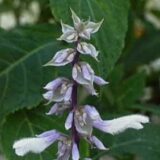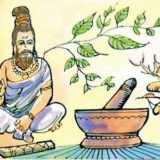Hallucinogens That Cause Visual Trips

Plants That Create Strong Visual Hallucinations
Plants have been used as hallucinogens for thousands of years. There are many different cultural reasons as to why a tribe or shaman would use a hallucinogen, however, the influence of these plants around the world has been well documented. Out of the many herbs and plants that provide hallucinogenic effects, some are visual; and of these visual hallucinogens, some offer more intense trips. There are hallucinogens with such strong visuals they can provoke confusion as to what is actually real. The experiences can be so realistic that many users will swear them authentic.
So what are the strongest hallucinogens that are naturally occurring? What are the most visual hallucinogens used throughout history and around the world? BotanicalShaman.com has compiled a list of the most visual hallucinogens known to man.
Complete List of Known ‘Visual Hallucinogens’
There are many hallucinogens on Earth, however, only some provide visuals, and even fewer are considered full-on psychedelic or offer realistic hallucinations. These hallucinogens are some of the strongest visual-producing hallucinogens on Earth. This list is in alphabetical order, though some of these plants may go by many names (so look carefully).
Agara (Galbulimima belgraveana)
Agara is used for its bark and is one of the strongest sources used for DMT in modern times. It has also been used in ancient times for its hallucinogenic properties. A tea is prepared from the leaves and bark which creates strong visual hallucinations. Many people claim the hallucinations are almost always revolving around men and animals being slaughtered, however, it is most certainly visual (no matter how grotesque the visual imagery may be).
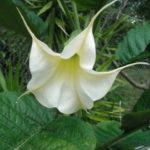 Angel’s Trumpet (Brugmansia arborea)
Angel’s Trumpet (Brugmansia arborea)
Angel’s Trumpet goes by so many names depending upon the region. It is native to the Amazon, and many parts of South America. It is known for its use in many cultures and religions. This plant has had some dark history, being used to sedate the wives, slaves and children of the dead, before they were buried alive with them. It has also been used for many divination-like and prophecy rituals. This is a strong hallucinogen that is feared by many around the world and capable of producing very realistic visions.
Ayahuasca (Banisteriopsis caapi)
Ayahuasca is made from many plants, and sometimes the primary hallucinogenic ingredient is changed from preparation to preparation. The most common hallucinogen used to make Ayahuasca is Banisteriopsis caapi. This drink is very popular in Colombia, Ecuador, Brazil, and much of South America (especially within and surrounding the Amazon, where the Banisteriopsis vine grows abundantly). The drink is used ceremonially and for initiation rituals. The Jivaro people are well known to use the drink to have visions of their ancestors, and even to leave one’s body and wander other worlds. The visual hallucinations from Ayahuasca can be extreme and can occur while awake as well as while asleep.
Badoh Negro (Ipomoea violacea)
Badoh Negro is a well-resepected Mexican herb used by Aztec tribes for its hallucinogenic properties. There is extremely high alkaloid content in this plant and it has so many traditional uses. Badoh Negro, also called Piule, has been used as a divination herb, for religious purposes, for healing purposes and for many shamanic rituals. It is typically prepared into a drink form, using only about a thimble’s worth of crushed or ground Badoh Negro seeds.
Bakana (Scirpus sp.)
Bakana is considered to be one of the strongest and most effective herbs of the Tarahumara. It has been considered so powerful, in fact that it is often feared for its ability to induce permanent insanity. Still, it has a strong place throughout the folk medicine of the tribe and it has been used by many of the Indians of the tribe to “travel to distant places” and to be able to talk to deceased tribesmen and ancestors alike. Bakan is well-known to produce extremely colorful and vivid visions, full of profound imagery.
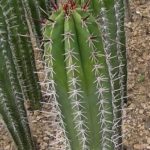 Cawe (Pachycereus pecten-aboriginum)
Cawe (Pachycereus pecten-aboriginum)
Cawe has also been known as Wichowaka by the Tarahumara Indians of Mexico. This cactus is another plant that the tribe considers so powerful, that it has the ability to induce insanity. In fact, “Wichowaka” literally interprets into “insanity” in the native Tarahumara language. Despite the fact that Cawe is a powerful hallucinogen, it has been considered purely medicinal by most members of the tribe. Medicinal or not, Cawe produces unmistakably visual hallucinations. The relevant hallucinogenic alkaloids are in the juices of the cactus branches…although the highest alkaloid content will be found in the youngest branches.
Cebil (Anadenanthera colubrina)
Cebil has many names depending upon the time period and exact geographical region of use. It is mostly popularly known as Cebil, or its scientific genus, Anadenanthera, however, also goes by Villca and Yopo. It is very well known by the Orinoco basin tribes, and despite folklore that the plant was used even in precolonial times (within South America), true written records only begin acknowledging the plant and its hallucinogenic, intoxicating activity in 1946. It is most commonly employed in Argentina and Peru. Typically the plant’s beans are turned into a snuff, or the herbage is smoked. The hallucinations are strongly, undeniably visual.
Common Reed (Phragmites australis)
Common reed is an invasive growing grass, that often spreads rather rapidly in the right growing conditions. Phragmites desire wetland-like terrain, doing very well near streams, ponds, rivers, swamps and marshlands. It is seen growing along the roadside in many cases. This is probably because the roads are raised and end up creating natural “gutters” of water, even if it is hard to detect on a sunny day. Common Reed is sometimes used as an Ayahuasca analog for its incredibly high DMT content. The roots are usually what are used to boil a powerful DMT concoction that creates incredibly visual hallucinations.
Copelandia (Panaeolus cyanescens)
Copelandia also goes by the name Jambur. These hallucinogenic mushrooms grow most commonly on cow, buffalo and horse dung. It is native to Bali. These mushrooms are well known in the area as relatively safe ways to experience visual hallucinations and are frequently sold to tourists and travelers. They are also used by the natives for a variety of ceremonies, festivals and parties throughout Bali. The mushrooms contain a ton of psilocine (up to 1.2 percent) and over a half a percent of psilocybine. In fact, Copelandia cyanescens actually has the highest content of these alkaloids found in ANY hallucinogenic mushroom around the world!
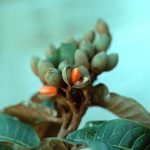 Epena (Virola calophylla)
Epena (Virola calophylla)
Epena has been called Nyakwana and also Yakee, depending upon geographical region and tribe. It is very well known to the natives of South America, especially in Brazil, Colombia, Peru and Venezuela. There are a few other species which are also used, including V. calophylloidea, V. elongata, and V. theiodora. The plant’s bark is scraped for its innermost layer, dried and then ground into a powder and use it as a snuff. There are several different, complex preparations for making the powder the finalized snuff used in rituals and as a medicine. No matter how it is prepared, the effects are very visual hallucinations due to the high content of DMT in the bark of the Epena tree.
Ereriba (Homalomena sp.)
Ereriba is native to New Guinea and well known by the natives to induce powerful hallucinogenic dreams. Although the plant also has medicinal reasons, the natives cannot deny experiencing extremely vivid visions which seem entirely realistic. The leaves are usually consumed along with Agara leaves and bark. Although little research exists about the constituents of Ereriba, Agara is most certainly hallucinogenic, which would potentially make this edible combination even stronger.
Ergot (Claviceps purpurea)
There are a lot of stories and much folklore surrounding the Ergot fungus. It has most likely served significant historical roles in many cultures, probably dating back beyond even Ancient Greece. It has been responsible for many poisonings, however, in most of these circumstances, Ergot was poorly understood. An overdose of Ergot is most definitely dangerous. The alkaloids are strong and the effects are much like LSD. In fact, LSD itself is a synthetic derivative of Ergot.
Fly Agaric (Amanita muscaria)
Fly Agaric are attractive white-spotted red-capped mushrooms that grow abundantly in India and North America. They are very likely the narcotic referred to in ancient India as “Soma,” and also associated with the god of the like. They were very well employed for shamanic inebriation, and for their powerful hallucinogenic effects. These hallucinations are extremely visual being described as greatly colorful. Fly Agaric mushrooms have a lot of religious significance and can be found in many spiritual rituals and ceremonies
Hierba de la Pastora (Salvia divinorum)
Salvia is a very powerful hallucinogen. Some people call it one of the strongest hallucinogens on Earth. Some Salvia “trips” are weak, however, and leave people misinformed. The truth is, a strong Salvia extract can provide a trip (when smoked or brewed into a traditional drink), that is so powerful that the visual hallucinations can create entire, realistic-feeling worlds…experiences that feel like they last far longer than they actually do. Shaman have used the for divination rituals and to induce dreams that allow them to talk to their ancestors.
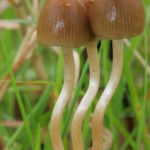 Liberty Cap Mushrooms (Psilocybe semilanceata)
Liberty Cap Mushrooms (Psilocybe semilanceata)
Liberty Caps are one of the oldest used hallucinogens on the planet, dating historical tales of psychoactive usage of the mushrooms as far back as 12,000 years ago. They were known by the Alpen nomads as a way to induce powerful visual hallucinations. The mushrooms contain high concentrations of psilocybin, psilocine, and baeocystine. The mushrooms are eaten fresh or dried, requiring about 25-32 mushrooms to achieve a psychedelic experience.
Maiden’s Acacia (Acacia maidenii)
Maiden’s Acacia is a well-known Ayahuasca analog, being a wonderful source of DMT. The bark and leaves are both used to make extracts which are powerfully psychedelic and create colorful, visual hallucinations. The resin is very commonly associated with Pituri use, especially in Australia. Maiden’s Acacia can be found in Australia, but also in North America (especially California). It had been used as a medicine in older times, though today has been in the spotlight for its psychedelic use.
Mescal Bean (Sophora secundiflora)
Mescal Bean has been used as far back as more than 9,000 years ago. Native American tribes and Indian tribes of Mexico have used the beans to create a powerful vision-inducing effect. The visions are visual and occur while awake. They are also used for recreation, even ceremonial recreation, but still respected as powerfully hallucinogenic. Mescal Beans are known to be fatal in high doses. Normal preparation uses the red beans of the plant to make a psychedelic drink. Mescal Bean is also known by the names Coral Bean, Colorines, Frijoles, and Red Bean.
Ololiuqui (Turbina corymbosa)
Ololiuqui has been called Badoh, Xtabentum and by its genus name “Turbina.” They are also frequently called “Morning Glory Seeds.” There is record of the use of Ololiuqui seeds as far back as the early Aztecs. They have been used for divination, witchcraft and as an analgesic. They are also intoxicating, and used for recreation. There are extravagant rituals for preparing and consuming the seeds for a variety of ailments and reasons. Usually it is turned into a drink. The ergoline alkaloids of this plant are in high concentration and the effects are most similar to those of LSD.
Peyote (Lophophora diffusa)
Peyote is one of the most popularly used hallucinogens of North America, especially in Mexico. It producese Mescaline, its main constituent responsible for hallucinogenic activity. Mescaline is also known as trimethoxyphenylethylamine. Mescaline is a powerful hallucinogen, creating extremely colorful visions. Peyote has strong religious significance throughout many cultures. It has been used in a variety of religious rituals, healing ceremonies and shamanic practices. It is frequently associated with “vision quests” and has been protected for use by the Native American Church of the United States and Canada, despite its illegal status otherwise in the territories. Peyote has been used as far back as the Aztecs and is still harvested today.
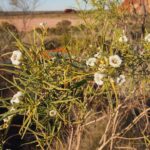 Pituri (Duboisia hopwoodii)
Pituri (Duboisia hopwoodii)
Pituri is a sacred herb to tribes in Australia, and has been known to be used as a psychoactive plant as far back as 40 thousand years ago. The leaves are typically fermented and mixed with some other ingredients, to then be chewed for their powerful hallucinogenic effects. Pituri is well known to induce dreams, visions and enjoyable visual hallucinations. Alongside its recreational use, Pituri has been used for a variety of medicinal purposes. Pituri is also known as Pituri Bush and Poison Bush. It is regarded as a tonic, hallucinogen and also narcotic, depending upon who is asked.
San Pedro (Trichocereus pachanoi)
San Pedro is suspected to be the second most used hallucinogenic cactus, next to Peyote, and holds just as much religious and cultural significance. It was very popular among the natives of South America, most especially tribes of the Andes. The cactus is used for shamanic divination, by medicine men for diagnosis, and to spiritually steal someone’s identity. San Pedro relies on the same chemical as Peyote for its powerful vision-inducing effects, that chemical being Mescaline. The stem is typically sliced and then boiled in water for many hours…sometimes other plants are combined for taste or additional psychoactive properties.
Sweet Flag (Acorus calamus)
Sweet Flag is known by many other names, including Flag Root, Sweet Calomel and Calamus. It has been most prominently used by the Cree Indians in Canada. It has many medicinal uses which involve chewing the rootstalk. It is said, however, that Sweet Flag provides a powerful hallucinogenic intoxication that can be similar to the effects of LSD in larger doses. There are many ceremonial uses of Sweet Flag, as well as many ritualistic preparations which can intensify its effects.
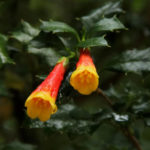 Taique (Desfontainia spinosa)
Taique (Desfontainia spinosa)
Taique has been also known by the names Borrachero and Latuy. It is very popular in Chile and Colombia. The name Borrachero is Colombian and literally translates into “intoxicant.” The Kasma tribe have been well-known to employ the drink as a medicine which helps medicine men diagnose medical ailments and disease. It has also been used for its ability to induce visual hallucinations and vivid dreams. The visions are so realistic sometimes it causes the shaman to go temporarily insane, having difficulty differentiating dreamworld from reality.
Teonanacatl (Many Mushroom Species)
Teonanacatl refers to a diverse group of mushrooms, so it is natural to expect it to go by many names. Some of the names include: Tamu, Hongo de San Isidro, She-to, and To-shka. Many of these mushrooms have provided such powerful, psychedelic effects and have been recognized as such an anomaly, that they have actually been worshiped. There are many cultures which have considered these mushrooms sacred, from Native Americans, Middle America Indians, the Aztecs and Mexican Indians, and the Indians of South America. The mushrooms induce intense visual and auditory hallucinations. The hallucinations can be dreamlike but are usually very realistic in experience. The full list of species considered to be psychedelic (or “magic mushrooms”) includes: Conocybe siligineoides, Panaeolus sphinctrinus, Psilocybe acutissima, P. aztecorum, P. caerulescens, P. mexicana, P. semperviva, P. wassonii, P. yungensis, and Psilocybe cubensis.
Voacanga (Voacanga africana)
Voacanga seeds and bark are responsible for creating amazing visual hallucinations, trips that are described as prophetic to some. Voacanga is most commonly employed by the shaman and “magic men” of African tribes, wehre the plant is native. It is also used as an aphrodisiac. The indole alkaloids, most especially voacangine and voccamine, are responsible for the hallucinogenic effects.
Wichuriki (Mammillaria craigii)
Wichuriki has also been called Hikuli Rosapara, Hikuri, Peyote de San Pedro, and Mammillaria. It is mostly used by the Tarahumara in Mexico as a shamanic and religious plant. Wichuriki is a potent hallucinogen and known to create very visual experiences. Shaman use the cactus for many things. Typically it is split open, and the center tissue removed then roasted. The top of the plant is also used, and considered most powerful. The fruit and spines also have hallucinogenic properties. Wichuriki gives users the experience of traveling to far away lands, seeing amazing colors and having a pleasantly intoxicating experience. Sometimes the visions happen when awake, other times (more commonly), they occur after falling asleep.
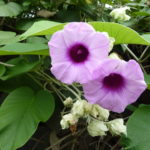 Wood Rose (Argyreia nervosa)
Wood Rose (Argyreia nervosa)
Wood Rose is native to India and has significant prominence in Ayurvedic medicine. It is also employed in China, Nepal and Tibet, where it also grows. Wood Rose was transplanted and is now growing in the wild and being cultivated in Hawaii, thus gaining the nickname “Hawaiian Wood Rose.” Wood Rose has a number of tonic/medicinal applications and has been used as an aphrodisiac. It is traditionally used to slow down aging and increase intelligence. In more recent times, Wood Rose has been popular for its psychoactive properties as a hallucinogen. The seeds are high in ergot alkaloid content, most specifically containing a lot of LSA. 5 to 9 seeds are crushed or ground and then mixed with water to provide a psychoactive dose similar to LSD. The experience is very visual and profoundly colorful.
Yauhtli (Tagetes lucida)
Yauhtli is used by the Huichol of Mexico and has been popularly employed as a hallucinogen. Yauhtli has been associated with many ceremonies and rituals in the region and can induce and enhance powerfully vivid visions. Yauhtli has a high content of thiophene derivatives. Sometimes, it is mixed with tobacco, though it is more frequently smoked alone.
Final Words on Visual Trips From Natural Plants
Some lesser-known plants have been used as hallucinogens for thousands of years, before the tradition dithered. There are many theories and reasons as to why hallucinogens go “in and out” of style. Some suggest this is because the plants have literally lost their psychedelic potency. Others suggest it is because tribes and cultures have lost touch with the recipes. There are also legal and regulatory reasons as to why some plants were employed in some times but not others. This phenomena can also be noted by the fact there are plants which are used as hallucinogens today, which previously had no known hallucinogenic effects. And of course, there are likely many more hallucinogens which provide powerful, visual experiences, yet to to be discovered. As extensive this list of plants that induce visual hallucinations may be, the list is sure to grow rather than to shrink!
